Double Mitzvahs
B’nai mitzvah students whose event fell during the pandemic share the challenge of learning new Torah and haftorah portions for a rescheduled date.
When Stella Galanti read from the Torah Nov. 14 it was a big feat in two ways. She is believed the first bat mitzvah to read from the Torah on Shabbat at Congregation Or VeShalom and it was her second time mastering a Torah and haftorah reading.
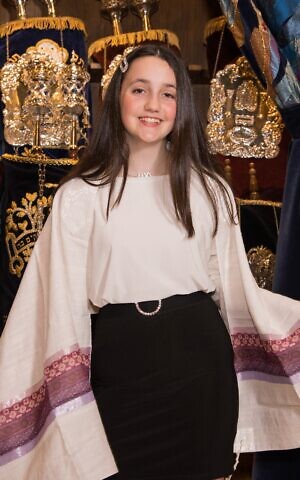
Most b’nai mitzvah have a difficult time learning one pair of readings, let alone two sets of the standards for the coming-of-age ceremony. But learning new parts of the service is par for the course when lifecycle events are upended during a worldwide health crisis.
While some Atlanta synagogues have allowed b’nai mitzvah students to continue with their originally planned readings despite a date change, others required students to learn the portion designated for the actual ceremony. Stella was among them.
“It was upsetting at first when some things … weren’t possible,” Stella said about the pandemic putting a wrench in her original bat mitzvah, scheduled for mid-March. She learned her Torah maftir (final) reading and haftorah for the original date and learned a new pair of readings for Nov. 14. Her haftorah reading was extremely long for the original date and even longer for this month’s simcha.
But Stella said the extra effort was worth it to set a new standard at her traditional Sephardic synagogue. “It’s very special to be able to follow my great-grandfather, grandfather and father to read out of the Torah at Or VeShalom.” They are original OVS members. “It’s an incredible honor. I’m very excited to make that step in my life and to start a new chapter at Or VeShalom.”
The Davis Academy eighth grader added, “I’ll have a great story to tell my kids.”
Stella is not alone in her determination to become a b’nai mitzvah despite the logistical obstacles. The AJT found two other b’nai mitzvah from different synagogues to share their experiences learning a double set of readings – or more – when their big day fell within the pandemic.
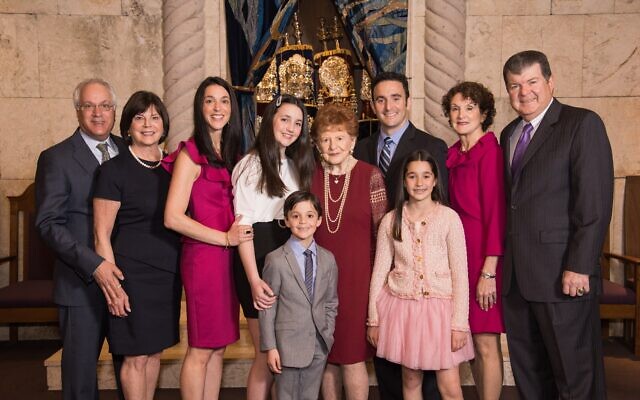
What the students seem to have in common is diligence, flexibilty and advanced Hebrew skills. They rescheduled from earlier in the pandemic to a later date, projecting that the pandemic would be over and traditional b’nai mitzvah and celebrations would resume. Wishful thinking because COVID had other plans.
Stella and another student the AJT interviewed shared a b’nai mitzvah date, March 21, a week after the pandemic shuttered synagogues, schools and businesses.
Fast Learner
It’s a good thing Jacob Levin and the other students interviewed are fast learners. Levin took the challenge of a bar mitzvah in a pandemic in stride, performing both sets of readings at his intimate, but memorable, bar mitzvah ceremony during Sukkot last month at Congregation Etz Chaim.
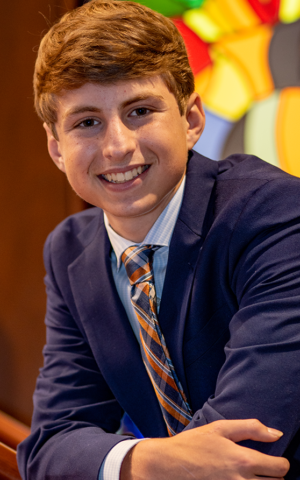
“I look at things straight on,” the Mabry Middle School teen told the AJT. “I am not looking for the easy way. I go right through the middle of it. It was going to be a pain in the tuches, as I said in my d’var Torah, but I put my head down and kept working on it.”
Levin’s first maftir and haftorah were among the longest of the year, taking 20 minutes each to recite, according to his parents. His second set of readings were a lot shorter.
A rescheduled b’nai mitzvah certainly comes with its benefits and drawbacks.
Levin’s new date, with its shorter readings, convinced his mother to read a line of Torah, but his grandfathers, who were prepared to read at the original bar mitzvah, were unable to read last month because of COVID concerns. Families that didn’t quarantine with each other couldn’t stand together on the bimah, Levin explained.
The highlights of the ceremony last month were that both sets of Levin’s grandparents and his 91-year-old great-grandmother Janine Storch, a Holocaust survivor, were in attendance.
Levin also invited three classmates, including two who had virtual b’nai mitzvah earlier in the pandemic, to stand on the bimah with him – socially distanced – for the Ashrei prayer.
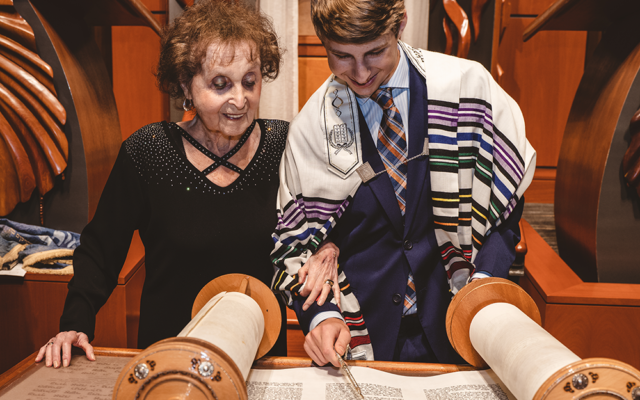
His mother Beth tears up remembering the scene. “It was like as it would have been if there had not been a pandemic. They got to have a moment like that as Jacob did.” She kvelled over her son’s selflessness, that “he would think enough on his day to include his classmates.”
Her husband Micah echoed those sentiments. “He kept a level head. I couldn’t be prouder. To watch him do what he did was surreal.” Dad also learned a new portion for the rescheduled bar mitzvah, but admits it was easy for him, being a product of Atlanta’s Jewish day schools. For Jacob, it was a challenge, his father said. But instead of having a negative attitude, Jacob used positive energy “regardless of how difficult it was. Once he got to game day, he shined like a star.”
Mock Mitzvah
For her original bat mitzvah date, May 2, Sari D’Agostino learned the maftir, an additional Torah portion – because she didn’t think the maftir was long enough – and a haftorah. And the Howard Middle School eighth grader performed them by Zoom from the small chapel of Congregation Shearith Israel while Rabbi Ari Kaiman led the service from the main sanctuary and congregants led the rest from their homes.

Sari called this her “mock mitzvah,” according to mom Annie. Then Sari learned a second set of maftir, Torah and haftorah readings for the rescheduled date of Aug. 15.
At that time, her immediate family and about 30 family and friends attended in the main sanctuary, spaced and masked.
It wasn’t the full sanctuary the family had envisioned, but when the dust settled, Sari said she was relieved to have the smaller audience and opportunity to greet each guest instead of being overwhelmed by attendees crowding the bimah to wish her “mazel tov” after the service.
“I kind of really liked it. I did not want a huge celebration in the first place. I don’t like big events. … It was really nice to have a smaller service, but still a bunch of people there to watch you read Torah.”
Sari said she tried not to think about what could have been and walked away having a “great experience.”
Mom Annie chokes up remembering how 18 of Sari’s friends, half of whom weren’t Jewish, attended the bat mitzvah. “It was nice for them to support her when half of the family was not able to be there.”
She also recalls how the pandemic derailed plans for her middle daughter’s special day.
“In the middle of March, we knew when everything was shutting down, we saw the writing on the wall. One of the things she was most looking forward to was her first and second cousins and all her aunts and uncles being there. When everything shut down, we realized that was not going to happen.”
Sari reiterated, “I wanted my cousins and friends to be there; not just to be on Zoom. I wanted to see people and their reactions to stuff like my d’var Torah.”
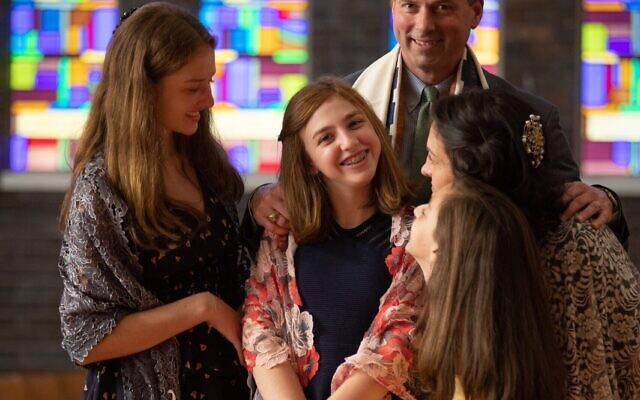
Initially it was difficult to accept the idea of starting over, Sari confessed. “I was pretty disappointed and sad. I worked a full year for one thing, and that one thing was not going to happen. Every Thursday I would go home and do my Hebrew tutoring and not hang out with my friends. I was missing out.”
Still, Sari said it was easier the second time to learn her new readings. “I knew how to read, how to highlight, all the trope. … I just hit the ground running.” Plus, since Camp Barney Medintz was canceled because of the pandemic, she had more time to study over the summer. But she admits she wouldn’t have wanted to continue learning new readings in the hopes that a future date would allow for a return to traditional services on the other side of COVID. “It doesn’t make sense to keep postponing. Who knows when I’d actually be able to do it?”
Mom also learned a second Torah portion. “I promised all my kids that I would read a Torah portion for their bat mitzvahs. I told Sari if she was learning portions for two mitzvahs, then I would too. I did learn a second portion, although all the portions were really long for the August date so the rabbi graciously allowed me to do half of the reading and a congregant did the other half.”
Easier Second Round
Like Sari, Stella said learning her second set of readings was easier than the first because she had already caught onto the trope.
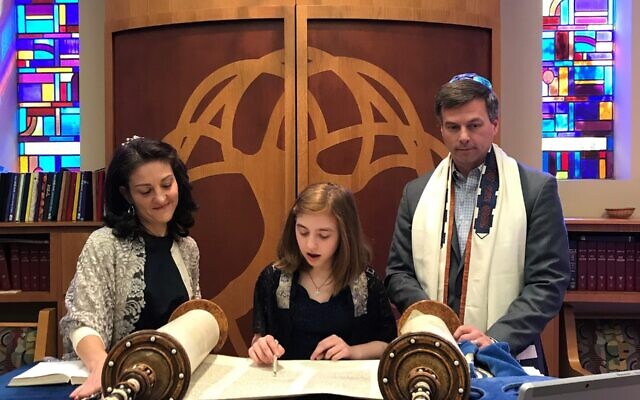
On her original bat mizvah date, Stella performed her first set of Torah and haftorah readings informally for her family and grandparents, social distanced in her backyard, as well as for her extended family through FaceTime. While her grandfathers and uncles weren’t able to read the Torah portions they had studied for the original bat mitzvah date, Stella’s father Todd persisted in learning a second reading.
His wife Julia explained her husband’s time commitment. “It means so much to him that this is happening in the first place.” The couple initially didn’t think their daughter would have the privilege to read from the Torah on Shabbat at OVS.
Julia added: “The fact that everything we hoped is going to come true, he said, ‘If I have to learn a new portion, I will make sure I set aside time and dedicate myself’ because he felt it was important to also do his part.”
Similar to Jacob’s ceremony, Stella’s 96-year-old great-grandmother Ila Galanti was able to attend the bat mitzvah. “I’m excited to have my bat mitzvah in her presence,” Stella said. She added that she was blessed to also have all four of her grandparents there to share the special occasion.
Meanwhile, at some other synagogues, students weren’t required to learn new portions. They could recite the original portion on the new date.
“We are permitting our kids to read whatever portion they prepared regardless of the date,” Rabbi Joshua Lesser of Congregation Bet Haverim said in an email to the AJT.
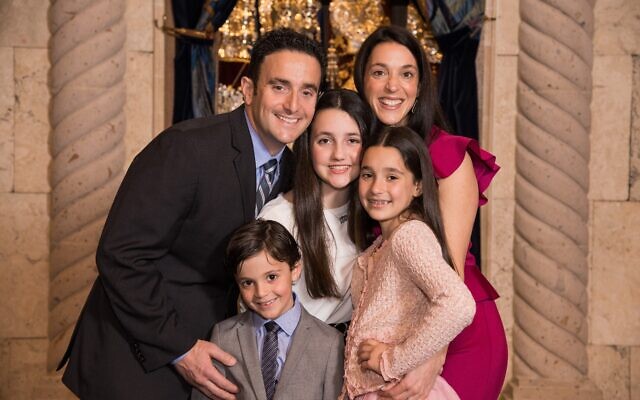
Rabbi Jason Holtz of Temple Kehillat Chaim said his synagogue follows the same pattern. “We allowed students to recite the portion that they originally learned at a later time. So plenty of postponements, but no student had to do more as a result.”
While Temple Beth David didn’t encounter this circumstance, the students of a newly started adult b’nai mitzvah class will have to learn two Torah portions, according to Rabbi Jesse Charyn. He explained via email that “built into the curriculum is a Zoom ceremony and an in-person ceremony (subject to the pandemic).
“At TBD our approach is to schedule the in-person ceremony once we receive the all-clear to resume indoor in-person gatherings. Adult b’nai mitzvah candidates will ultimately learn two Torah portions. Their second Torah portion will be determined once a vaccine has been widely administered and the CDC has revised guidelines to plan this wonderful simcha.”
- Roni Robbins
- STYLE Magazine
- Lifecycles
- Stella Galanti
- Congregation Or VeShalom
- B'nai Mitzvah
- torah
- Haftorah
- The Davis Academy
- hebrew
- COVID
- COVID-19
- Coronavirus
- Jacob Levin
- congregation etz chaim
- Mabry Middle School
- Janine Storch
- Holocaust Survivor
- Sari D’Agostino
- Howard Middle School
- Congregation Shearith Israel
- Rabbi Ari Kaiman
- Zoom
- Camp Barney Medintz
- Ila Galanti
- Rabbi Joshua Lesser
- Congregation Bet Haverim
- Rabbi Jason Holtz
- Temple Kehillat Chaim
- Rabbi Jesse Charyn
- Temple Beth David
- Bar/Bat Mitzvahs



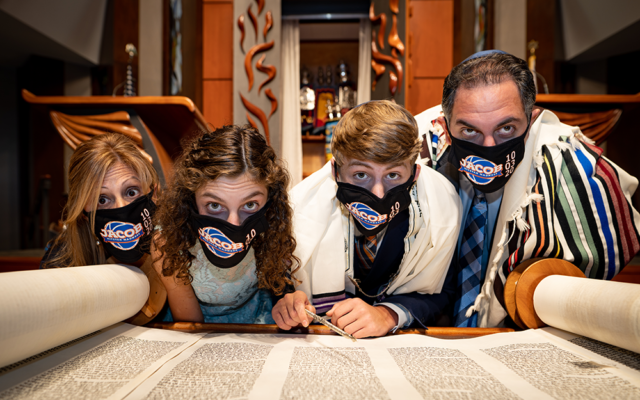
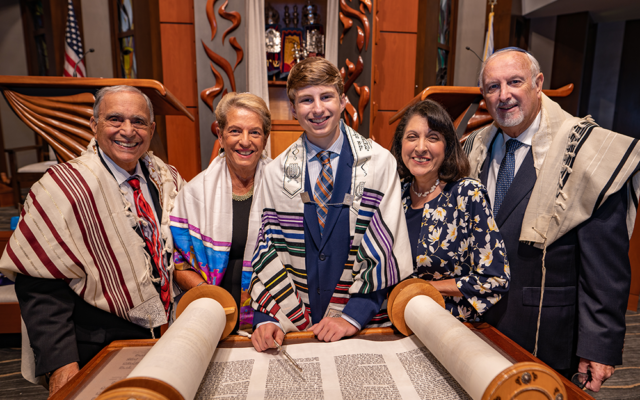
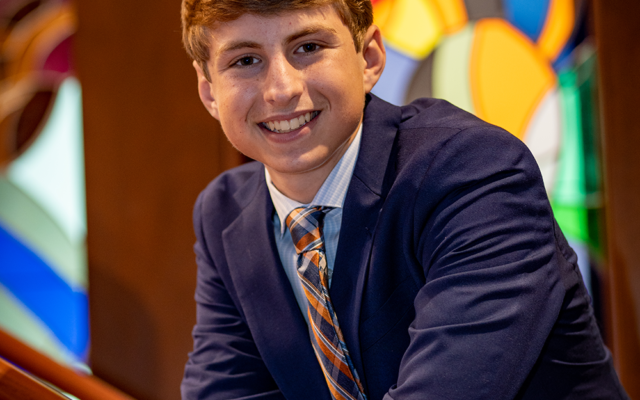
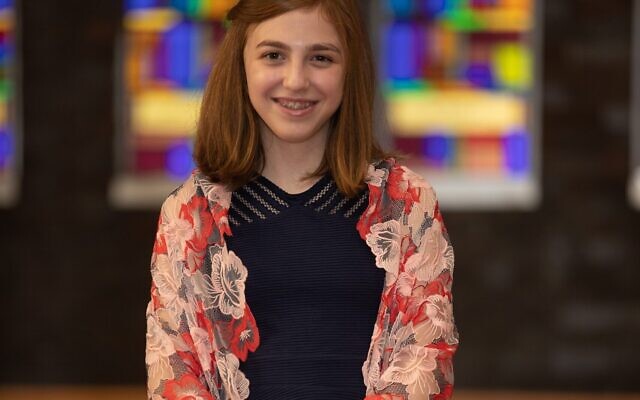
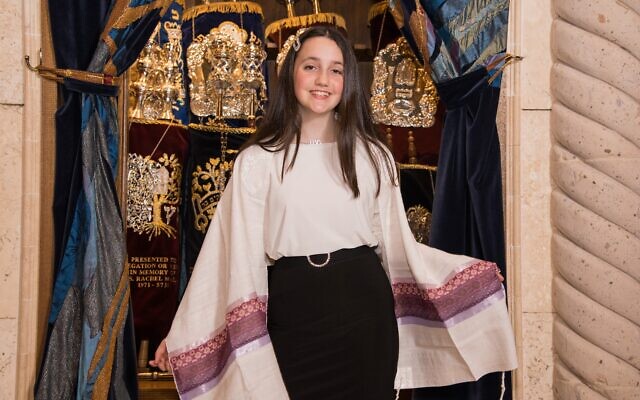
comments